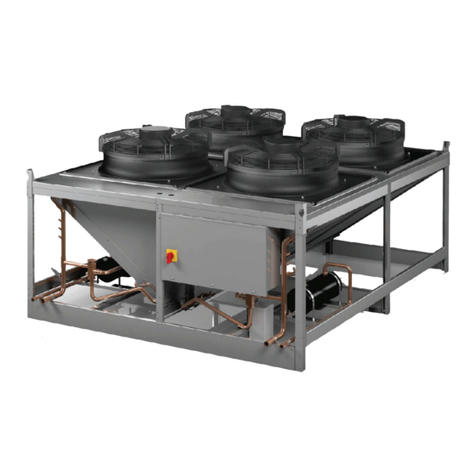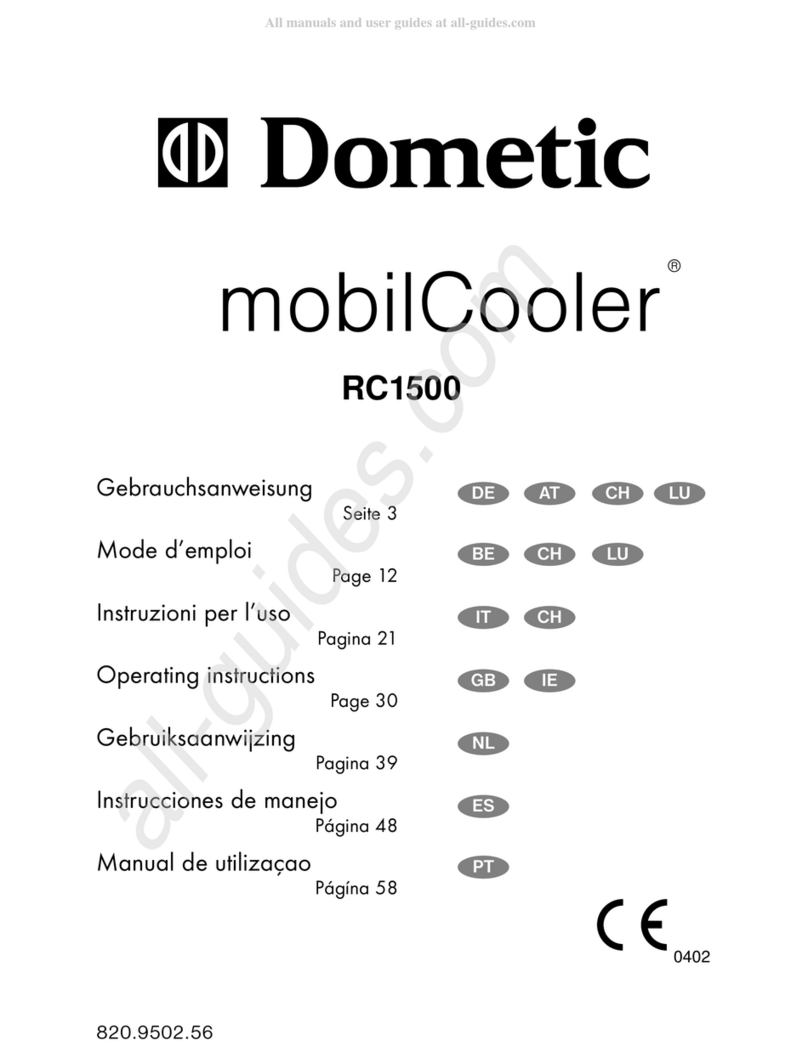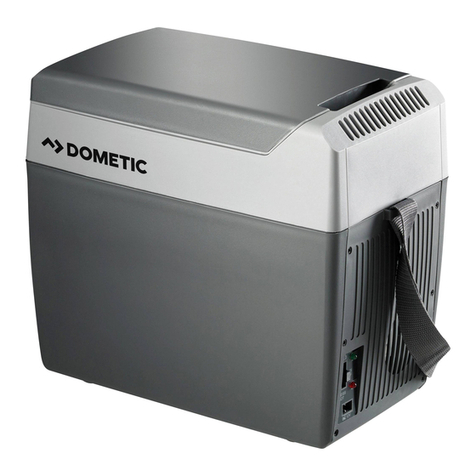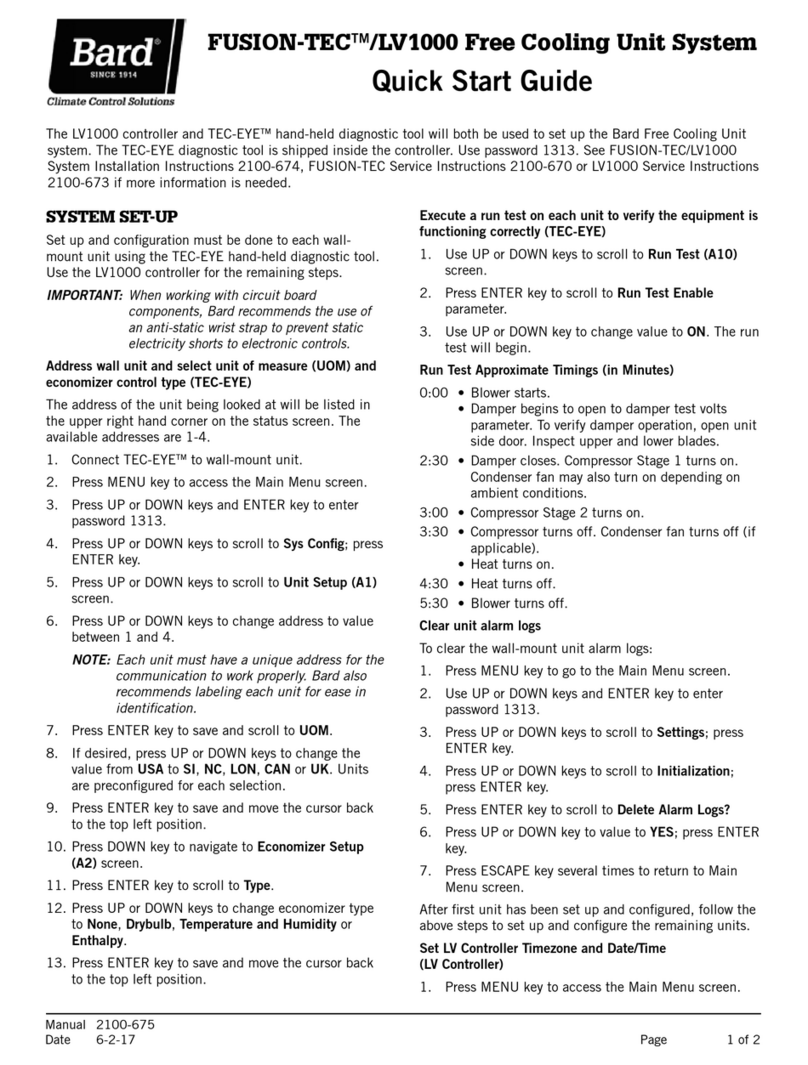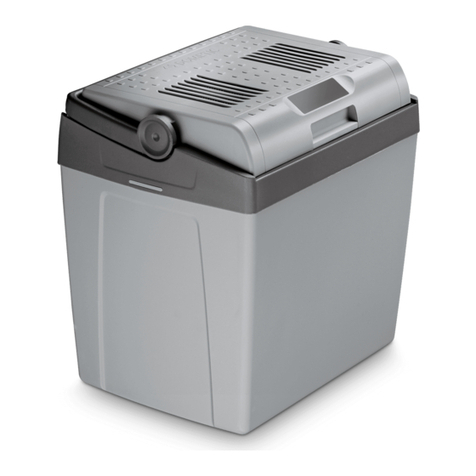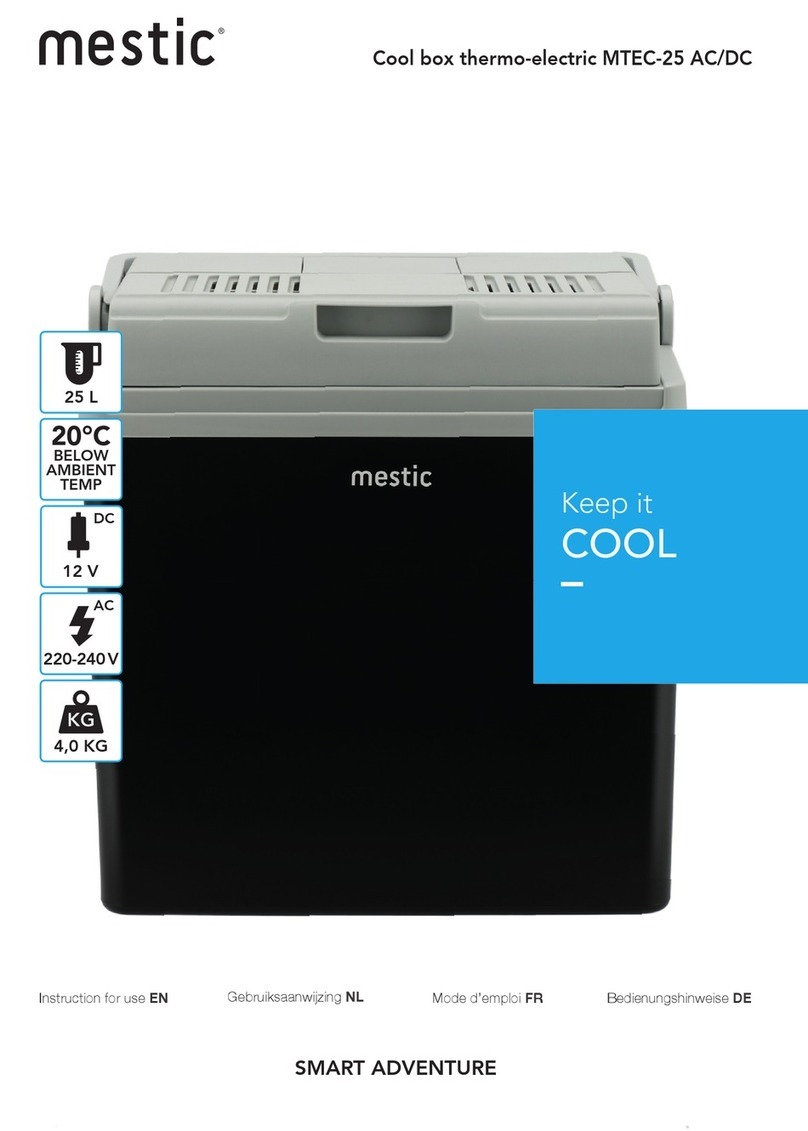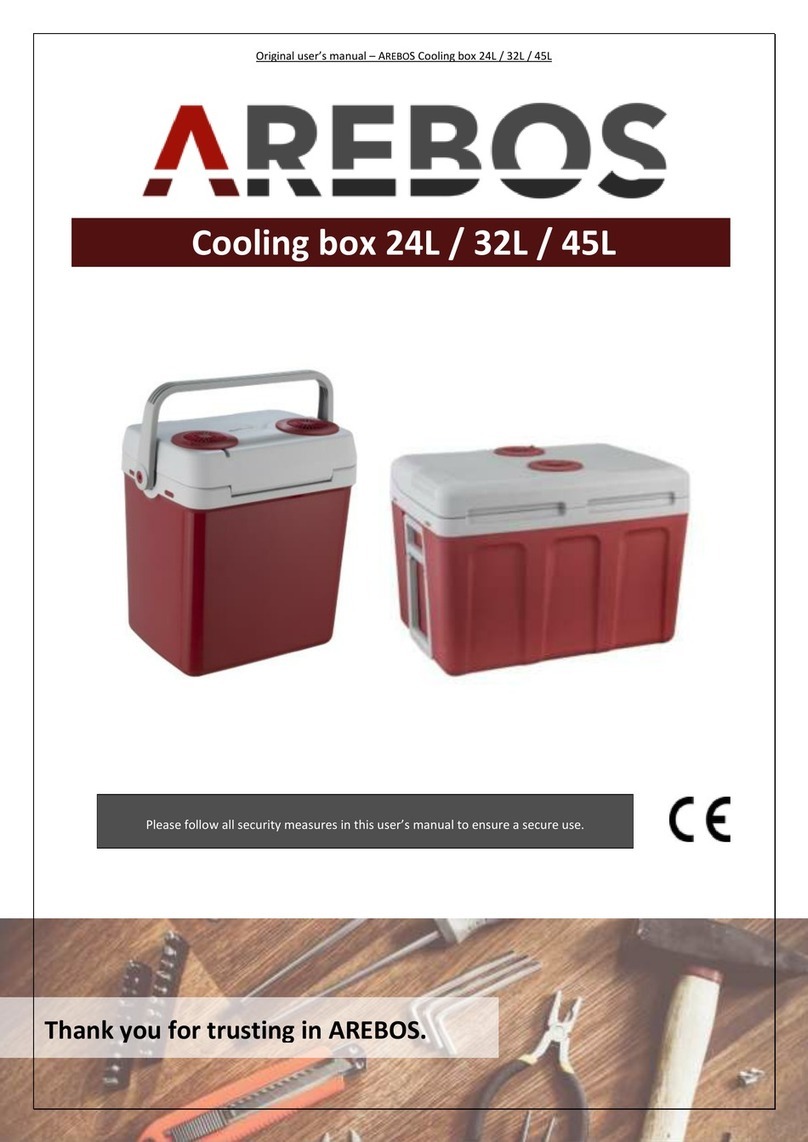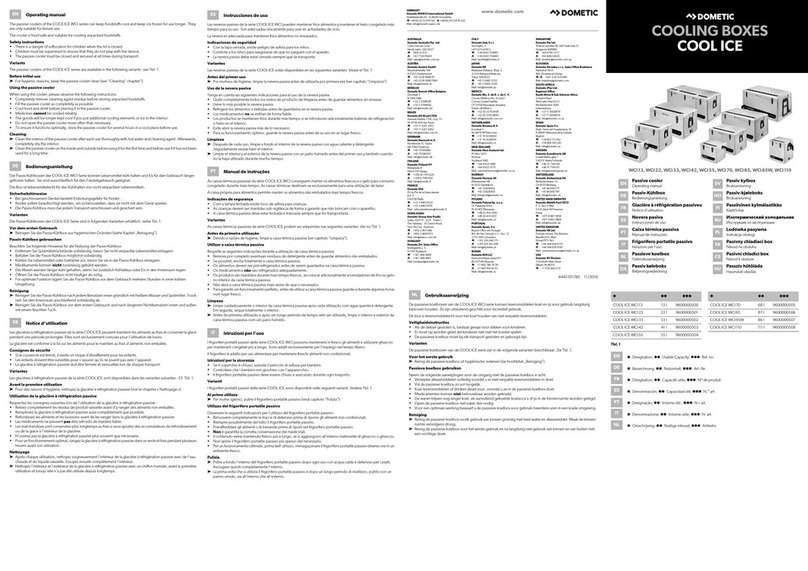Trane 4YCY4036B-SF-1H Service manual

Service Facts
© 2013 Trane
NOTICE: The manufacturer has a policy of continuous product and product data improvement, and it
reserves the right to change design and specifications without notice.
IMPORTANT — This document contains a wiring diagram and service information.This is customer property and is to
remain with this unit. Please return to service information pack upon completion of work.
WARNING:
HAZARDOUS VOLTAGE- DISCONNECT POWER and DISCHARGE
CAPACITORS BEFORE SERVICING
SINGLE PACKAGED
GAS HEATING / ELECTRIC COOLING
4YCY4036B1075/1096B
PRODUCT SPECIFICATIONS
4YCY4036B-SF-1H
1Certified in accordance with the Unitary
Air-Conditioner Equipment certification
program, which is based on AHRI
Standard 210/240. Sound Power val-
ues are not adjusted for AHRI 270-95
tonal corrections.
2All models are certified to UL 1995.
Ratings shown are for elevations up to
2000 ft. For higher elevations reduce
ratings at a rate of 4% per 1000 ft.
elevation.
3Convertible to LPG.
4This value is approximate. For more
precise value, see Unit Nameplate.
5Based on U.S. Government Standard
Tests.
6Filters must be installed in return air
stream. Square footages listed are
based on 300 f.p.m. face velocity. If
permanent filters are used size per
manufacturer's recommendation with
a clean resistance of 0.05" W.C.
7Standard Air - Dry Coil - Outdoor.
MODEL
RATED Volts/PH/Hz
Performance Cooling BTUH
Indoor Airflow (CFM)
Power Input (KW)
EER/SEER(BTU/Watt-Hr.)
Sound Power Rating [dB(A)]
Performance Heating
Input BTUH - 1st Stage (Natural Gas)
Input BTUH - 2nd Stage (Natural Gas)
AFUE
Temp. Rise — Min/Max (°F)
Orifice Qty / Drill Size (Natural Gas)
POWER CONN.—V/PH/HZ
Min. Brch. Cir. Ampacity
Fuse Size — Max. (amps)
Fuse Size — Recmd. (amps)
COMPRESSOR
Volts/Ph/Hz
R.L. Amps — L.R. Amps
OUTDOOR COIL — TYPE
Rows/F.P.I.
Face Area (sq.ft.)
Tube Size (in.)
INDOOR COIL — TYPE
Rows/F.P.I.
Face Area (sq.ft.)
Tube Size (in.)
Refrigerant Control
Drain Conn. Size (in.)
OUTDOOR FAN — TYPE
Dia. (in.)
Drive/No. Speeds
CFM @ 0.0 in. w.g. 7
Motor — HP/R.P.M.
Volts/Ph/Hz
F.L. Amps/L.R. Amps
INDOOR FAN — TYPE
Dia x Width (in.)
Drive/No. Speeds
CFM @ 0.0 in. w.g.
Motor — HP/R.P.M.
Volts/Ph/Hz
F.L. Amps/L.R. Amps
COMBUSTION FAN — TYPE
Drive/No. Speeds
Motor — HP/R.P.M.
Volts/Ph/Hz
FLA
FILTER / FURNISHED
Type Recommended
Recmd. Face Area (sq. ft.)
REFRIGERANT
Charge (lbs.)
GAS PIPE SIZE (in.)
DIMENSIONS
Crated (in.)
WEIGHT
Shipping (lbs.) / Net (lbs.)
4YCY4036B1075B
208-230/1/60
38000
1210
3.166
12.0 / 14.2
69
56250
75000
79.5
30 / 60
2 / #33
208-230/1/60
26.2
40
40
SCROLL
208-230/1/60
16.7 / 79
SPINE-FIN
2 / 24
15.49
3/8
PLATE FIN
4 / 15
3.54
3/8
EXPANSION VALVE
3/4 FEMALE NPT
PROPELLER
23.4
DIRECT / 1
3320
1/5 / 830
208-230/1/60
1.1 / 1.9
CENTRIFUGAL
10 X 10
DIRECT / VARIABLE
SEE FAN PERFORMANCE TABLE
1/2 / VARIABLE
200-230/1/60
4.3 / 4.3
CENTRIFUGAL
DIRECT / 2
1/45 / 2800/1500
208-230/1/60
0.34
NO
THROWAWAY
4
R410A
7.80
1/2
H X W X L
47.86 / 44.5 / 52.03
488 / 392
4YCY4036B1096B
208-230/1/60
38000
1210
3.166
12.0 / 14.2
69
72000
96000
80.0
40 / 70
3 / #37
208-230/1/60
26.2
40
40
SCROLL
208-230/1/60
16.7 / 79
SPINE-FIN
2 / 24
15.49
3/8
PLATE FIN
4 / 15
3.54
3/8
EXPANSION VALVE
3/4 FEMALE NPT
PROPELLER
23.4
DIRECT / 1
3320
1/5 / 830
208-230/1/60
1.1 / 1.9
CENTRIFUGAL
10 X 10
DIRECT / VARIABLE
SEE FAN PERFORMANCE TABLE
1/2 / VARIABLE
200-230/1/60
4.3 / 4.3
CENTRIFUGAL
DIRECT / 2
1/45 / 2800/1500
208-230/1/60
0.34
NO
THROWAWAY
4
R410A
7.80
1/2
H X W X L
47.86 / 44.5 / 52.03
493 / 397

2
Service Facts
HAZARDOUS GASSES!
Exposure to fuel substances,or by-products of incomplete
fuel combustion, is believed by the state of California to
cause cancer, birth defects, or other reproductive harm.
This warning complies with State of California law,
Proposition 65.
This product must be gas piped by a Licensed Plumber
or Gas Fitter in the Commonwealth of Massachusetts.
SAFETY HAZARD!
Bodily injury can result from high voltage electrical
components, fast moving fans, and combustible gas. For
protection from these inherent hazards during installation
and service, the electrical supply must be disconnected
and the main gas valve must be turned off. If operating
checks must be performed with the unit operating, it is
the technicians responsibility to recognize these hazards
and proceed safely.
SAFETY HAZARD!
This information is for use by individuals having adequate
backgrounds of electrical and mechanical experience.
Any attempt to repair a central air conditioning product
may result in personal injury and/or property damage.
The manufacturer or seller cannot be responsible for the
interpretation of this information, nor can it assume any
liability in connection with its use.
▲
WARNING
!
SAFETY HAZARD!
Do not operate the unit without the evaporator fan or coil
access panels in place. Reinstall the access panels after
performing maintenance proceedures on the fan. Operat-
ing the unit without the access panels properly installed
may result in severe personal injury or death.
EXPLOSION HAZARD!
Propane gas is heavier than air and may collect in any low
areas or confined spaces. In addition, odorant fade may
make the gas undetectable except with a warning device.
If the gas furnace is installed in a basement, an excavated
areas or a confined space, it is strongly recommended to
contact a gas supplier to install a gas detecting warning
device in case of leak. The manufacturer of your furnace
does not test any detectors and makes no representations
regarding any brand or type of detector.
CONTAINS REFRIGERANT!
SYSTEM CONTAINS OIL AND REFRIGERANT UNDER
HIGH PRESSURE. RECOVER REFRIGERANT TO RE-
LIEVE PRESSURE BEFORE OPENING SYSTEM.Failure
to follow proper procedures can result in personal illness
or injury or severe equipment damage.
▲
CAUTION
!
RECONNECT ALL GROUNDING DEVICES.
All parts of this product that are capable of conducting
electrical current are grounded. If grounding wires,screws,
straps, clips, nuts, or washers used to complete a path to
ground are removed for service, they must be returned to
their original position and properly fastened.
Unit contains R-410A Refrigerant!
R-410A operating pressure exceeds the limit of R-22.Proper
service equipment is required.Failure to use proper service
tools may result in equipment damage or personal injury.
SERVICE
Use only R-410A Refrigerant and approved POE
compressor oil.
▲
WARNING
!
▲
WARNING
!
▲
WARNING
!
▲
WARNING
!
▲CAUTION
!
▲CAUTION
!

3
Service Facts
PRESSURE CURVES FOR 4YCY4036
Cooling with Thermal Expansion Valve
LIQUID PRESSURE (PSIG)
OUTDOOR TEMPERATURE (Degree F)
SUCTION PRESSURE (PSIG)
OUTDOOR TEMPERATURE (Degree F)
COOLING PERFORMANCE CAN BE CHECKED WHEN THE OUTDOOR TEMP IS ABOVE 65 DEG F.
TO CHECK COOLING PERFORMANCE, SELECT THE PROPER INDOOR CFM, ALLOW PRESSURES TO STABILIZE. MEASURE INDOOR WET BULB
TEMPERATURE, OUTDOOR TEMPERATURE, LIQUID AND SUCTION PRESSURES. ON THE PLOTS LOCATE OUTDOOR TEMPERATURE (1);
LOCATE INDOOR WET BULB (2); FIND INTERSECTION OF OD TEMP. & ID W.B. (3); READ LIQUID (4) OR SUCTION (5) PRESSURE IN LEFT COLUMN .
EXAMPLE: (1) OUTDOOR TEMP. 82 F.
(2) INDOOR WET BULB 67 F.
(3) AT INTERSECTION
ACTUAL:
(4) LIQUID PRESSURE @ 1195 CFM CFM IS 331 PSIG LIQUID PRESSURE SHOULD BE +/- 10 PSI OF CHART
(5) SUCTION PRESSURE @ 1195 CFM CFM IS 146 PSIG SUCTION PRESSURE SHOULD BE +/- 3 PSIG OF CHART
DWG.NO.
4YCY4036-PC
100
105
110
115
120
125
130
135
140
145
150
155
160
165
170
40 50 60 70 80 90 100 110 120
200
250
300
350
400
450
500
40 50 60 70 80 90 100 110 120
(1)
(1)
(3)
(3)
(5)
(4)
(2)
(2)
INDOOR ENTERING WET
BULB CURVES
TOP TO BOTTOM
71, 67, 63 AND 59 DEG F.
INDOOR ENTERING WET
BULB CURVES
TOP TO BOTTOM
71, 67, 63 AND 59 DEG F.

4
Service Facts
IMPORTANT: Retain this wiring diagram; please return this document to service information pack upon completion of work.

5
Service Facts
IMPORTANT: Retain this wiring diagram; please return this document to service information pack upon completion of work.

6
Service Facts
Sequence of Operation
Operation of the unit heating or cooling cycles is controlled
by the setting of the comfort control.Once the comfort control
is set to either HEAT or COOL, unit operation is automatic. A
fan setting on the comfort control also provides for continuous
operation of the indoor fan when desired. The fan, when set
to ON provides continuous operation, while AUTO provides
operation during the heating or cooling cycles. CONTINU-
OUS fan mode during COOLING operation may not be ap-
propriate in humid climates. If the indoor air exceeds 60%
relative humidity or simply feels uncomfortably humid, it is
recommended that the fan only be used in the AUTO mode.
Heating Cycle
Comfort Control call for heat ( 2-stage thermostat)
Call for 1st stage only:
(R) and (W1) thermostat contacts close signaling the control
module (IGN) to run its self-check routine. After the control
has verified that the pressure switch (PS) contacts are open,
the limit switch (TCO) contacts are closed, and the flame
rollout (FL) switch is closed, the induced draft blower (CBM)
will be energized on high speed for approximately 5 seconds.
After the induced draft blower (CBM) has come up to speed,
the control will verify that the pressure switch (PS) contacts
are closed and switch the induced draft blower to low speed
for 20 second prepurge. The gas valve (GV) is energized
in the first stage to permit gas flow and the spark igniter (IP)
is energized. The flame detector (FD) confirms that ignition
has been achieved within the 7 second trial period.
As the flame detector confirms that ignition has been
achieved the delay to indoor fan on period begins timing and
after approximately 45 seconds, the indoor blower motor
(IDM) will be energized at low speed and will continue to run
during the heating cycle.
Call for 2nd stage after 1st stage:
(R) and (W2) thermostat contacts close signaling a call
for second stage heat. The induced draft motor (CBM) is
energized on high speed and the gas valve on second stage.
After approximately 30 seconds the control energizes the
indoor blower on high speed.
2nd stage satisfied, 1st stage still called:
(R) and (W2) opens, the induced draft blower is reduced to
low speed the gas valve is reduced to first stage. After about
30 seconds the indoor blower motor is reduced to low speed.
1st stage satisfied:
(R) and (W1) opens, the gas valve (GV) will close. The
induced draft blower (CBM) will be de-energized after
approximately 5 seconds postpurge. The indoor blower
motor (IDM) will continue to run for the fan off period (field
selectable 60 or 90 seconds [by jumpers]), then will be de-
energized by the control module.
Comfort Control call for heat (1-stage Comfort Control)
(R) and (W1/W2) (jumped) thermostat contacts close
signaling a call for heat. 1st stage sequence of operation
remains the same as above. 2nd stage heat has a 10 minute
delay from the time of 1st stage ignition.
Comfort Control satisfied:
Safety Sequences
This product is equipped with safety devices to protect against
abnormal conditions.
The temperature limit switch (TCO) is located on the blower
barrier, and can be accessed through the blower compart-
ment.This automatic reset device protects against excessive
supply air temperature. If this device opens, the gas valve
is immediately closed and will not permit operation until the
limit switch closes.
The rollout switch (RO) is located in the gas compartment
near the inlet of the burners. This is a manual reset device
designed to protect against any form of flame rollout. If this
device is opened the gas valve is immediately de-energized
and the control (IGN) will lockout the system.The rollout switch
(RO) must be reset before operation is allowed to continue.
The pressure switch (PS) is located in the upper right side
of the gas compartment. This automatic device assures
adequate combustion air pressure. If pressure against the
induced draft blower outlet becomes excessive, the pressure
switch will react and shut off the gas valve, until acceptable
combustion pressure is again available.
If the control (IGN) does not sense flame within the first trial
for ignition period, the gas valve will be de-energized. The
control (IGN) will initiate a 60-second interpurge. Following
the interpurge, the control will perform a second ignition
attempt. If the second try is not successful, the control will
start another 60-second interpurge. After the interpurge, a
third attempt will be tried. If the third try is not successful, the
control will lock out.
If loss of flame occurs during a heating cycle, the control
(IGN) will close the gas valve and cycle through the ignition
trial as stated above.
If control lock out occurs, the control (IGN) will retry a complete
ignition sequence in 1 hour.
The control (IGN) can be reset by removing power to the unit
or by turning the thermostat from ON to OFF for approximately
three seconds, then back ON.
Cooling Cycle
With the comfort control set to COOL and the fan set to
AUTO, the compressor contactor (CC) and the indoor fan
motor (IDM) are energized.
The energized compressor contactor (CC) completes the cir-
cuit to the compressor (CPR) and a secondary circuit to the
outdoor fan motor (ODM). If the compressor safety controls
are closed, the compressor (CPR) will operate with the outdoor
fan motor (ODM). The indoor fan motor (IDM) will operate.
The thermostat will continue to cycle the compressor and
fans to maintain the desired temperature.
With the comfort control fan set to ON, the indoor fan mo-
tor (IDM) will continue to run regardless of compressor and
condenser fan operation.
(R) and (W1/W2) (jumped) contacts open signaling the control
module to close the gas valve and de-energize the induced
draft blower after approximately 5 second postpurge. The I.D.
blower motor will continue to operate at the current speed for
60 or 90 seconds after the flames are extinguished .

7
Service Facts
Indoor Fan Performance 4YCY4036B
Down Airflow
Horizontal Airflow
4YCY4036 Heating Airflow, horizontal or downflow from .2 to .6" wg
0 0.1 0.2 0.3 0.4 0.5 0.6 0.7 0.8 0.9 1
Watts 162 173 197 226 256 285 313 343 383 440 525
CFM 1058 1062 1063 1063 1062 1060 1057 1053 1048 1042 1033
Watts 179 230 265 296 329 366 403 431 450 485 555
CFM 1179 1196 1204 1206 1205 1203 1199 1194 1185 1169 1144
Watts 318 336 365 399 435 469 502 533 563 - -
CFM 1390 1376 1370 1366 1361 1354 1349 1351 1369 - -
HIGH
External Static Pressure (in. wg)
LOW
MED*
4YCY4036-HOR
Motor Speed
0 0.1 0.2 0.3 0.4 0.5 0.6 0.7 0.8 0.9 1
Watts 169 182 210 243 273 301 331 370 433 480 530
CFM 1025 1062 1068 1063 1060 1061 1064 1055 1015 975 990
Watts 225 253 283 315 348 381 414 449 484 522 575
CFM 1187 1201 1203 1201 1198 1197 1194 1184 1157 1165 1150
Watts 339 357 390 424 455 483 516 571 669 - -
CFM 1391 1377 1377 1375 1366 1352 1344 1360 1340 - -
HIGH
External Static Pressure (in. wg)
LOW
MED*
4YCY4036-DOWN
Motor Speed
Selection
Low Stage High Stage
7-OFF 8-OFF A 725 1000
7-ON 8-OFF B 775 1075
7-OFF 8-ON C 850 1150
7-ON 8-ON D 925 1250
Selection
Low Stage High Stage
7-OFF 8-OFF A 825 1100
7-ON 8-OFF B 875 1175
7-OFF 8-ON C 950 1275
7-ON 8-ON D 1025 1375
* can be 1 or 3
4YCY4036 *075
4YCY4036 *096
Switch Settings Nominal Airflow
Switch Settings Nominal Airflow
* can be 1 or 3
*Factory Default Setting

8
Service Facts
CHARGING IN COOLING ABOVE 55°F OD
AMBIENT
The preferred method is to weigh in the factory charge
per the unit nameplate. If weighing in the charge is not
practical, the following method can be used. The fol-
lowing charging method is prescribed for systems with
indoor TXVs.
1. For best results – the indoor temperature should be kept
between 70°F to 80°F. Add system heat if needed.
2. Whenever charge is removed or added, the system must
be operated for a minimum 20 minutes to stabilize before
accurate measurements can be made.
3. Measure Liquid Line Temperature and Refrigerant Pres-
sure at service valves in the compressor compartment.
4. Locate your liquid line temperature in the left column of
the table, and the intersecting liquid line pressure under
the subcool value column. Add refrigerant to raise the
pressure to match the table, or remove refrigerant to
lower the pressure. Again, wait 20 minutes for the sys-
tem conditions to stabilize before adjusting charge again.
5. When system is correctly charged, you can refer to
System Pressure Curves (on page 2) to verify typical
performance.
R-410A Subcooling Charging Table
10 (ºF) Subcooling
Liquid Liquid
Temperature Pressure
(ºF) PSIG
55 185
60 200
65 217
70 235
75 254
80 274
85 295
90 317
95 340
100 364
105 390
110 417
115 445
120 475
125 506

9
Service Facts

10
Service Facts
SYSTEM FAULTS
ELECTRICAL
REFRIGERANT CIRCUIT
P-PRIMARY CAUSES S-SECONDARY CAUSES
Liquid Pressure Too high
Liquid Pressure Too Low
Suction Pressure Too High
Suction Pressure Too Low
Liquid Refrigerant floodback (TXV System)
Liquid Refrig. floodback (Cap. Tube System)
I. D. Coil Frosting
Compressor Runs Inadequate or No Cooling
Compressor & O.D. fan Do Not Start
Compressor Will Not Start But O.D. Fan Runs
O.D. Fan Won't Start
Compressor Hums But Will Not Start
Compressor Cycles on IOL
I.D. Blower Won't Start
Troubleshooting Chart

11
Service Facts
IGN Diagnostic Indicators Flash Codes
Steady OFF Check Power or Failed Board 2 Flashes
System Lockout: Failed to detect or
sustain flame
Slow Flash Rate Normal, No Call for Heat 3 Flashes Pressure switch problem detected
Fast Flash Rate Not used 4 Flashes
High Limit switch protection device
open
Steady ON Normal, No Call for Heat 5 Flashes
Flame sensed and gas valve not
energized or flame sensed and no "W"
signal
6 Flashes Flame Rollout Switch open
7 Flashes Thermostat miswired; W1 & W2
Fast Flash Rate: The LED will flash on for 1/4 second, and off for 1/4 second
Slow Flash Rate: The LED will flash on for 3/4 second, then off for 1/4 second.
The pause between groups of fast flashes is 3 seconds.
Status LED Liteport LED
IGN Diagnostic Indicators Flash Codes

Trane
6200 Troup Highway
Tyler, TX 75707 01/13
This manual suits for next models
2
Table of contents
Other Trane Cooling Box manuals
Popular Cooling Box manuals by other brands
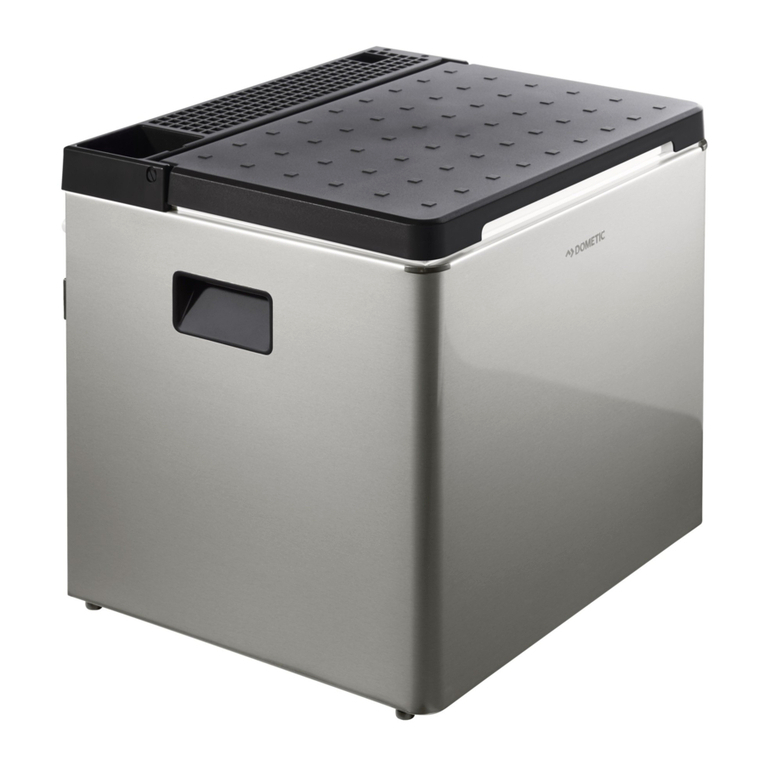
Dometic
Dometic ACX3 30 operating manual
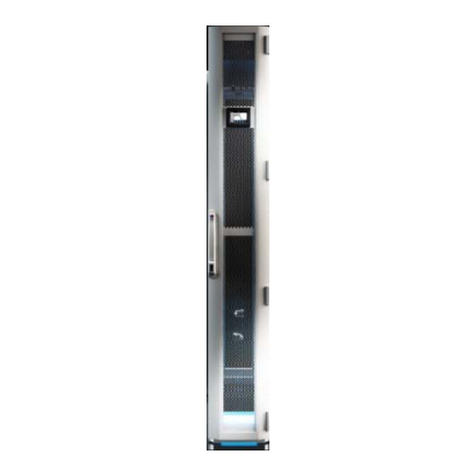
Rittal
Rittal TopTherm LCP Rack CW Assembly and operating instructions
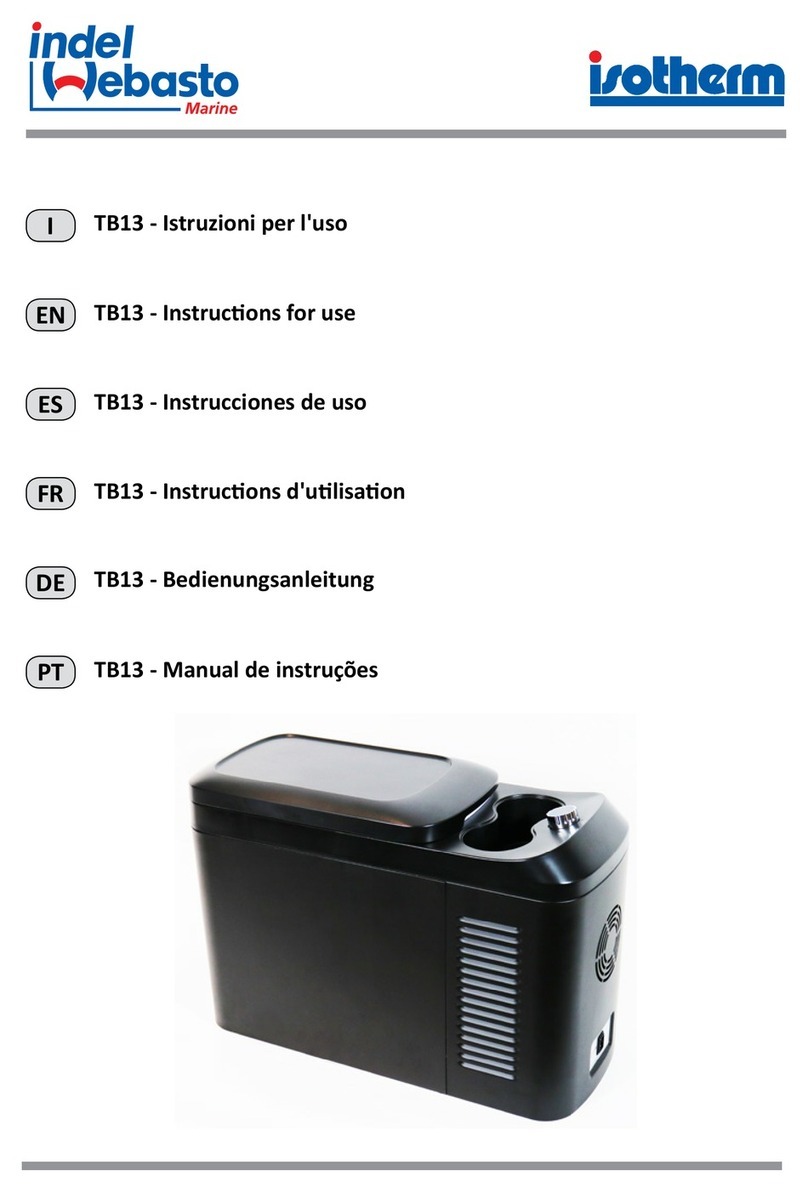
Isotherm
Isotherm TB13 Instructions for use
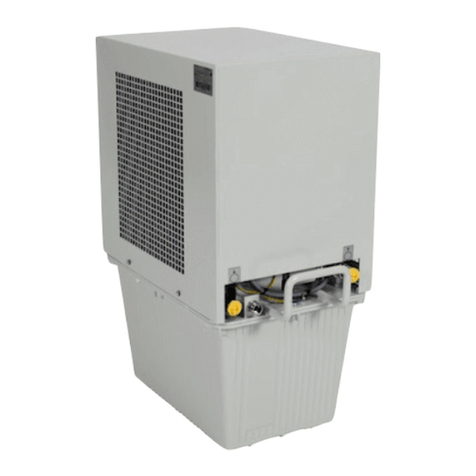
Laird
Laird OL 4503 Operation manual
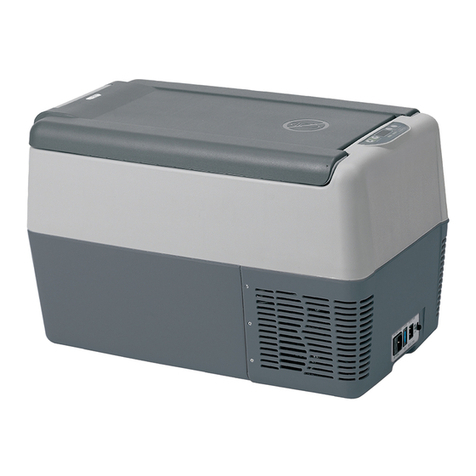
Indel B
Indel B TB 31 Instructions for use
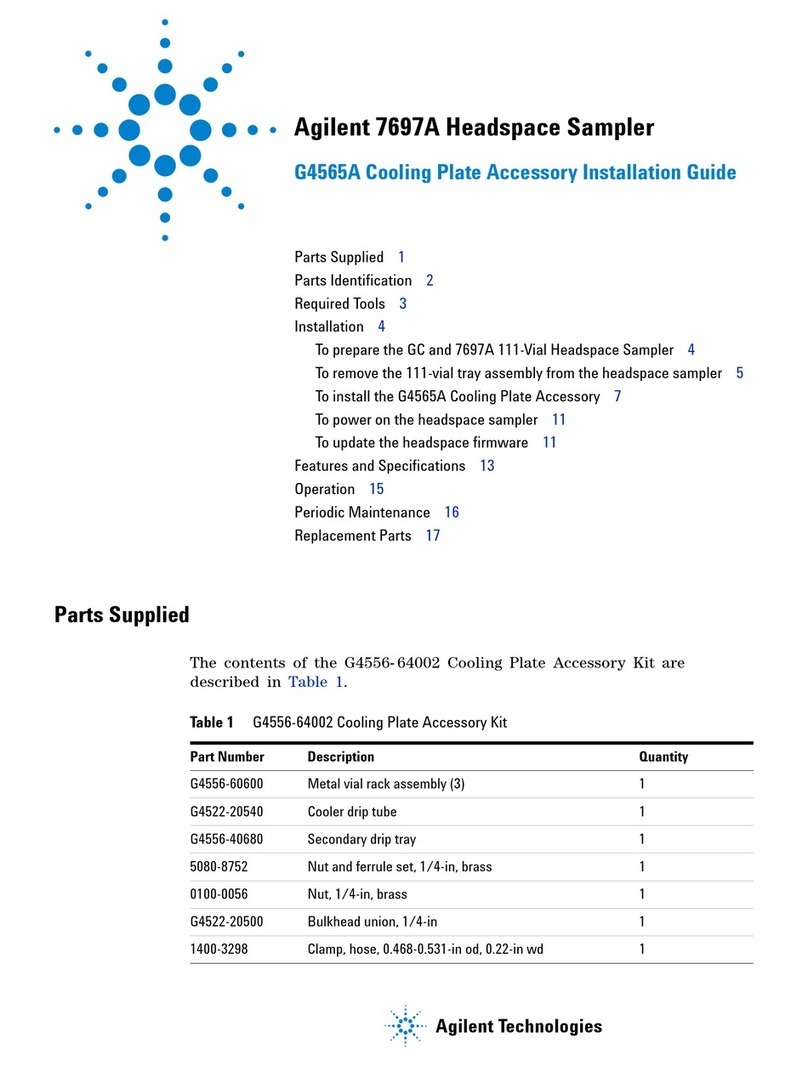
Agilent Technologies
Agilent Technologies G4565A Accessory installation guide
